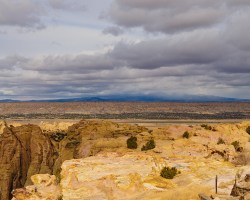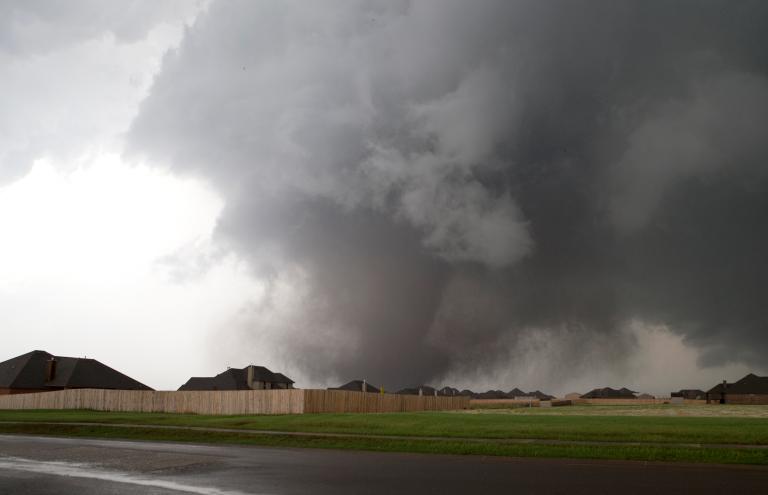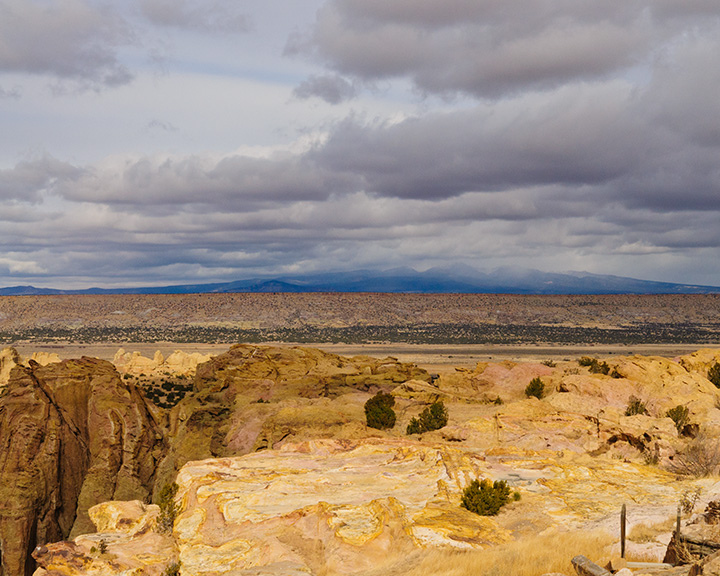
Mike FisherThe uranium mine is proposed on terrain such as this, near Mount Taylor, seen in the distance.
Two foreign-owned mining companies, betting that the world will quickly forget the horrors of Fukushima, plan to sink a pair of shafts into the rugged New Mexico landscape near near Mt. Taylor and begin 0perating the nation’s biggest uranium mine.
If approved by the U.S. Forest Service and state agencies, the mine would be the first of its kind to operate in the state in more than a decade, extracting as much as 28 million pounds of the radioactive heavy metal and desecrating as many as 70 acres of land sacred to Native Americans that’s designated by the federal government as traditional cultural property.
Previous uranium mining left the state’s landscape scarred and workers sickened. But the Roca Honda joint venture of Canadian and Japanese companies says the industry has learned from past mistakes and now has the whole safe-isotope-extraction thing sorted out. From the Albuquerque Journal:
[Roca Honda Manager John] DeJoia said he would be the “first to admit there are legacy issues,” but that much has been learned in the industry.
“Were cars less safe 60 years ago? Of course they were … Do we know more about food? We certainly do, and that’s the case with uranium, coal, copper,” DeJoia said. “It is an evolving process and just because it wasn’t done properly 40 or 50 years ago doesn’t mean we can’t do it properly today.” …
He concedes that for now, neither spot market nor long-term sales market prices “support fervent development.”
“However, the nuclear-power situation in the world — in our country — indicates a true shortage and that the price will go up once the fervor over Fukushima and everything gets past us,” he said, noting that the U.S. itself produces only 7 or 8 percent of the 55 million to 60 million pounds of uranium used a year by the nation’s nuclear plants. “We will have to realize nuclear power is probably the most viable, cleanest power source we have.”
Needless to say, DeJoia’s glee is not shared by all of the neighbors of the proposed mine. From the same article:
[A] coalition of community organizations, including several Native American groups and an organization of former uranium miners, contends a mining operation would imperil the area’s water supply and quality. The group also believes it would severely impact an area designated by the Forest Service as a traditional cultural property that has great spiritual significance for indigenous people across the Southwest.
“It is essentially the same as proposing a huge uranium mine in the middle of the Vatican. There’s just no way to avoid the impacts,” said attorney Eric Jantz of the New Mexico Environmental Law Center, which is representing the coalition, the Multicultural Alliance for a Safe Environment.
Jantz said water pumped from the mine could result in significant drawdowns of surface water and springs. There is also concern waste piles and toxic heavy-metal materials could make their way into ground and surface water, he said.
The Forest Service could issue its approval this year, the newspaper reports, clearing the path for drilling to begin within the next several years. And once that happens, hoo-boy, is New Mexico in for an economic bonanza — the likes of which DeJoia can’t even describe to a reporter:
“I won’t run you through all the economics on that, but you can rest assured there is an awful lot of income tax paid on that,” he said. “There are a lot of New Mexico taxes in there.”
Thanks for sparing us the numbers. Nobody wants to be thinking hard when we could just be mindlessly digging for short-term profits.




